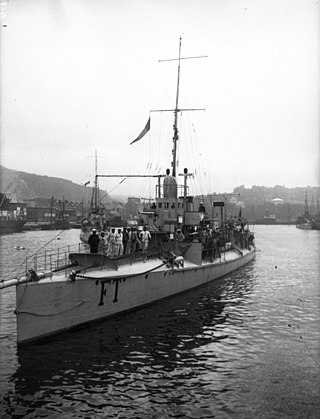Top Qs
Timeline
Chat
Perspective
French destroyer Fleuret (1907)
Destroyer of the French Navy From Wikipedia, the free encyclopedia
Remove ads
Fleuret was one of 13 Claymore-class destroyers built for the French Navy in the first decade of the 20th century.
Remove ads
Construction and career
Fleuret was ordered on 5 May 1905 and was laid down at the Arsenal de Rochefort in 1906. The ship was launched on 14 December 1906 and was assigned to the Northern Squadron after her completion in March 1908.[1] She remained with the unit as it was successively redesigned as the Third Squadron (3e Escadre) in 1910 and was assigned to the 2nd Destroyer Flotilla (2e escadrille de torpilleurs) when the Third Squadron was reorganized and renamed the 2nd Light Squadron (2e escadre légère) in November 1912.[2]
When the First World War began in August 1914, Fleuret was still assigned to the 2nd Destroyer Flotilla[3] based at Brest and remained with that unit until mid-1915. She was transferred to the North Sea Flotilla (Flotille de la mer du Nord), based at Dunkerque, the following year. In February 1916, the ship was badly damaged in a collision with the destroyer Aventurier and was under repair at Le Havre until November. Fleuret was assigned to the Normandy Patrol Boat Division (Division des patrouilleurs de Normandie) at Cherbourg in 1918. The ship was struck from the naval register on 12 January 1920 and served as a towed target from January 1921 until her sinking in 1923.[2]
Remove ads
References
Bibliography
Wikiwand - on
Seamless Wikipedia browsing. On steroids.
Remove ads

